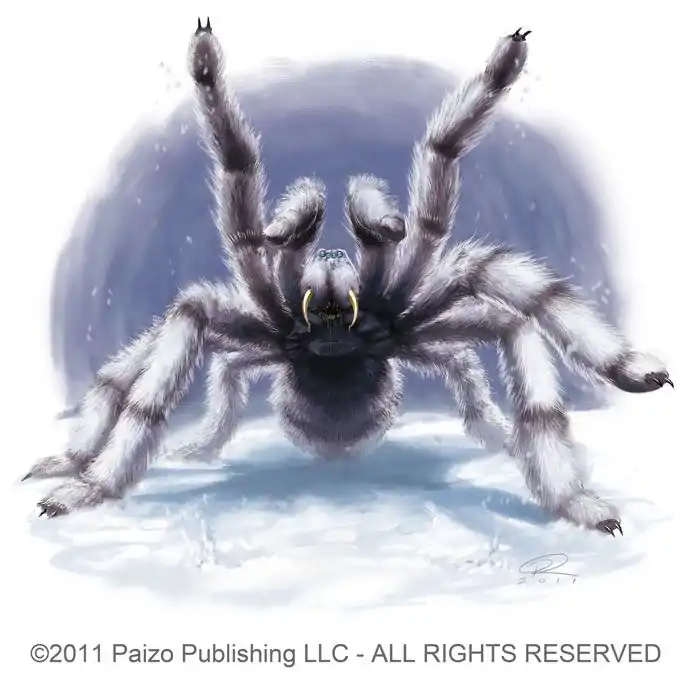Snow Spider (5e Creature)
Snow Spider
|
Large beast, unaligned Armor Class 14 (natural armor)
Skills Perception +5, Stealth +7 Snow Camouflage. The spider has advantage on Dexterity (Stealth) checks made to hide in snowy terrain. Ice Walk. The spider can move across and climb icy surfaces without needing to make an ability check. Additionally, difficult terrain composed of ice or snow doesn't cost it extra moment. Spider Climb. The spider can climb difficult surfaces, including upside down on ceilings, without needing to make an ability check. ACTIONSBite. Melee Weapon Attack: +6 to hit, reach 5 ft., one target. Hit: 8 (1d10 + 3) piercing damage, and the target must make a DC 12 Constitution saving throw, taking 18 (4d8) cold damage on a failed save, or half as much damage on a successful one. If the cold damage reduces the target to 0 hit points, the target becomes frozen. A frozen creature is paralyzed and can thaw by spending 1 hour in warm temperature or by taking 15 fire damage.
|
Kin to the giant spider, the snow spider is wreathed in snowy white fur. These spiders dwell in icy tunnels lined with dense, calcified webbing. Snow spiders set lengthy lines of hard webbing across their lair and in the surrounding area. Blending into the environment, these lines act as signals to the snow spider. |
Back to Main Page → 5e Homebrew → 5e Creatures
